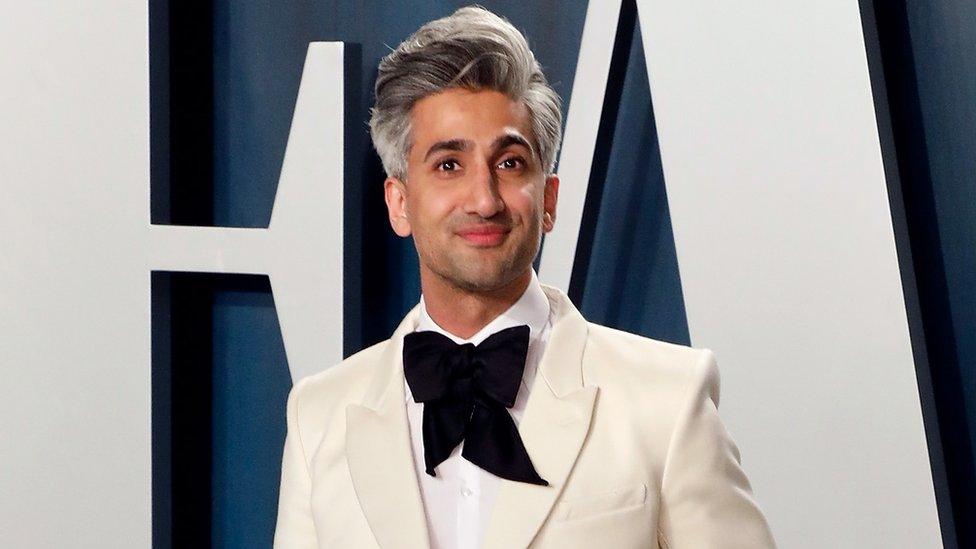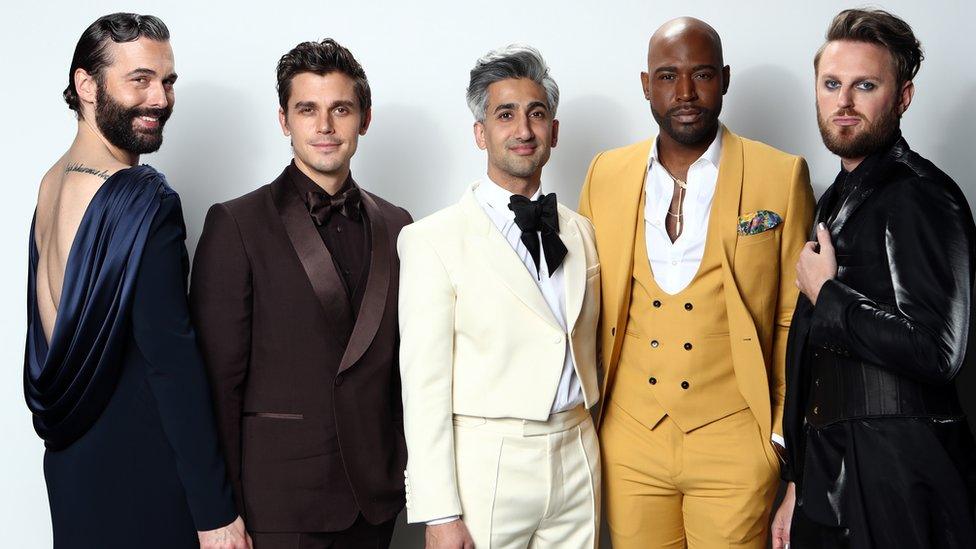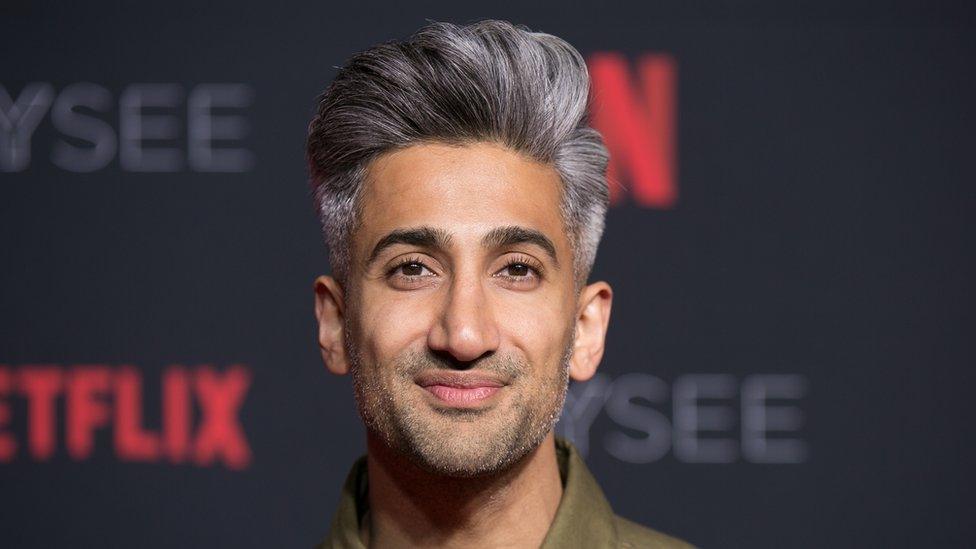Queer Eye star Tan France welcomes first child via surrogate
- Published

France said he and his husband were "fully obsessed" with their new son
Queer Eye star Tan France and his husband Rob have welcomed their first child via a surrogate.
Writing on Instagram, the Doncaster-born fashion expert revealed their son Ismail France had been born on 10 July.
"Give our son a warm welcome. He came 7 weeks early, so he's been in the NICU [newborn intensive care unit] for the past 3 weeks," France posted.
"But, today, we finally got to bring him home. We love him so, so much. Like, fully obsessed."
He added: "Our surrogate is doing so great, post labour, and we couldn't be more grateful for the greatest gift in our lives."
The post has attracted more than one million likes, with model Gigi Hadid, actress Mary McCormack and France's Queer Eye co-stars among those sending well-wishes to the family.
Allow Instagram content?
This article contains content provided by Instagram. We ask for your permission before anything is loaded, as they may be using cookies and other technologies. You may want to read Meta’s Instagram cookie policy, external and privacy policy, external before accepting. To view this content choose ‘accept and continue’.
France has been married to illustrator Rob since 2007.
Earlier this year, France announced the couple were expecting a baby via an Instagram post of him posing shirtless with a sonogram.

Queer Eye's Fab Five L-R: Jonathan Van Ness, Antoni Porowski, Tan France, Karamo Brown and Bobby Berk
Queer Eye was rebooted by Netflix in 2018 and has been a huge hit with viewers over five seasons.
The reality show was inspired by the early-noughties series Queer Eye For The Straight Guy, which saw a group of gay men give a member of the public a makeover.
The Netflix reboot saw France enlisted to dispense fashion advice as one of the show's Fab Five.
The others are interior designer Bobby Berk, grooming consultant Jonathan Van Ness, food and wine specialist Antoni Porowski, and culture expert Karamo Brown.
What is surrogacy?
Surrogacy is where a woman becomes pregnant with the intention of handing over the child to someone else after giving birth.
Generally, she carries the baby for a couple or parent who cannot conceive a child themselves - they are known as "intended parents".
There are two forms of surrogacy. In traditional surrogacy, the surrogate mother's egg is used, making her the genetic mother.
In gestational surrogacy, the egg is provided by the intended mother or a donor. The egg is fertilised through in vitro fertilisation (IVF) and then placed inside the surrogate mother.
Surrogacy is illegal in some countries, but in the UK it is allowed where the surrogate mother is not paid, or only paid for reasonable expenses. Paying the mother a fee (known as commercial surrogacy) is prohibited.
Related topics
- Published9 March 2018

- Published22 September 2019

- Published14 June 2018

- Published5 June 2019
